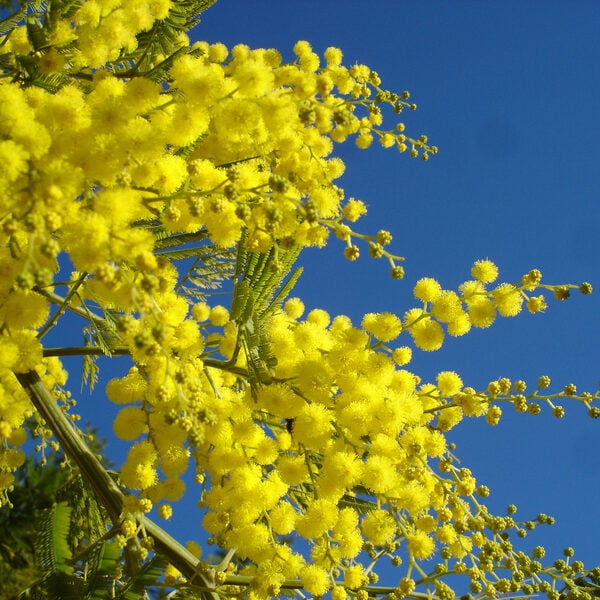Acacia pravissima (Oven's Wattle)
From £34.00 incl. VAT
Tasmanian Mimosa. A small, dense, evergreen Weeping Willow with little triangular leaves and fragrant yellow flowers in spring. Beautiful little tree. 20ft after 15 years.

Hardiness level Amber
A small weeping evergreen Mimosa tree with unusual triangular leaves and yellow flowers in March. Best in full sun (to get the lovely shape) and reasonably well drained, but not chalky, soil. These plants are grown from seed so they will need to mature for about 3-7 years before they flower. When the flowers do appear they are yellow, fragrant and copious. They form in the autumn but don't come out until early spring. Prune if necessary after flowering. Reliably hardy in London and coastal gardens in all but the very coldest winters - even then they will often reshoot from the base. This tree is native to Victoria and is hardier than most of the Australian Acacias (Mimosa is the common name but - just to confuse - they're not Mimosas at all, they're Wattles. Or Acacias. Hmmm...) and is denser than most Acacias.
Very fast growing initially, so please stake to avoid it falling over as it may sometimes outpace the root system while young. If kept in a pot, keep well cut back and remember, they're pretty thirsty. An important addition to this is that they're Bad Wilters. What on earth is a Bad Wilter? Good Wilters wilt when they have insufficient water, you give them a drink and 45 minutes later they're right as rain. Bad Wilters don't. You give them a drink and unless you catch them just right, they won't recover. This applies to a relatively small number of woody plants plus bamboos (in particular). In the case of this plant, once it's established in the ground it's incredibly unlikely to ever be a problem but if you grow it in a pot - you have been warned. Putting the pot in a tray and making sure there's always water in the tray is a good solution.
On an important and slightly lavatorial point that's worth mentioning - to avoid any embarrassing situations : when the roots break on most Acacias (particularly this one), they give out a rather unpleasant odour normally associated with breaking wind. Join up the dots and you will be in no doubt as to the significance of this information.
Propagated by us from seed.
N.B. When clipping several plants with the same tool, have a bucket containing a 5% bleach solution and swish your blades around for 30 seconds between plants to sterilise them. This will help avoid the chance of cross contamination of disease.
As with all woody plants, plant high, exposing as much of the taper at the base of the trunk as possible. Allowing soil to accumulate round the base of a tree can be fatal. Keep very well watered when first planted.
Additional Information |
|
|---|---|
| Size | 110L (H2-4.4m, W1.7-3.5m) S80cm-2m, G9-11, 18.5L (H1.1-2m, W64cm-1m) S4cm, G2-4cm, 20L (H62cm-2.9m, W1.4-1.8m) S50cm-1m, G4-5cm, 5L (50-60cm) |
| Soil Type | |
| Light | |
| Plant Type | Evergreen, Flowers, Grown by Us, Screening Plants, Shrubs, Trees |
| Continent of Origin | |
| Specialist Plants | |
| Features | |
| Tree Size | |
| Situation | |
| Flower Colour | |
| Hardiness | |






















